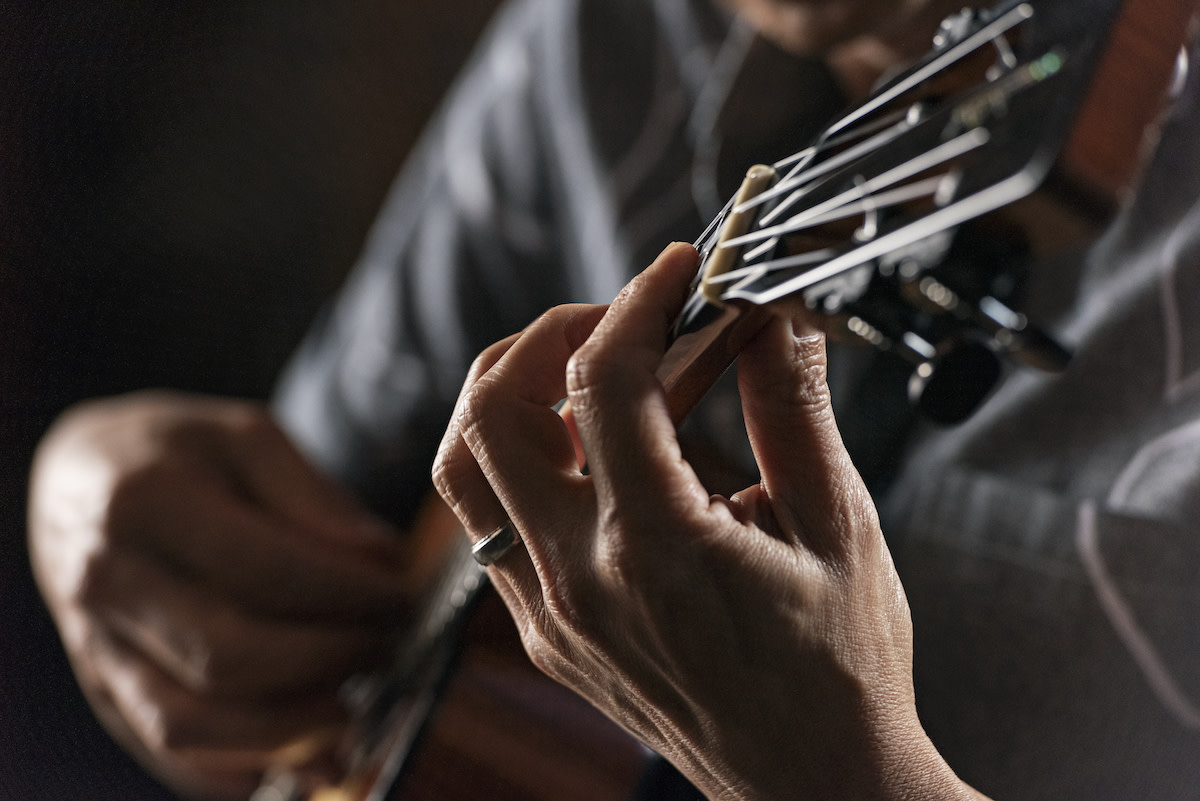How to Play Ukulele Chords: Basic Ukulele Chord Shapes
Written by MasterClass
Last updated: Jun 7, 2021 • 4 min read
Once you bring home a brand new ukulele, you'll naturally want to dig in to learning some ukulele songs to play solo or with a band. Beginning ukulele players usually start with some basic ukulele chords. Once you master your major chords and minor chords—along with a few basic strumming patterns—you can start playing a wide array of ukulele standards.
Learn From the Best
How to Read Ukulele Chord Diagrams
Ukulele chord diagrams serve as a visual tool for beginning ukulele players. These diagrams show proper fingering for various ukulele chords, but there are a few prerequisites to master before you can read them.
- Make sure you know basic ukulele tuning. Unless they indicate otherwise, ukulele chord charts and diagrams assume the standard C tuning of G-C-E-A. Tune your ukulele's fourth string is tuned to G (making it the G string), the third string to C (making it the C string), the second string to E (making it the E string), and the first string is tuned to A (making it the A string). This tuning applies to soprano ukulele, concert ukuleles, and tenor ukuleles. Baritone ukulele tuning is D-G-B-E, which is sometimes called "G tuning.” You might want to use a clip-on tuner to get your pitches precise.
- Familiarize yourself with a fretboard layout. Chord diagrams show the intersection of individual strings with individual frets. They indicate where your fingers go on each string (including what strings should be left open with no fretting). They also show you which strings to skip entirely.
- Know the names of your fingers. Chord diagrams label fingers from one to four. Your index finger (pointer finger) is your first finger, your middle finger is your second finger, your ring finger is your third finger, and your pinkie is your fourth finger. You don't typically use your thumb to fret ukulele strings.
Simple One-Finger Ukulele Chords for Beginners
You can actually play ukulele chords using only one finger and few open strings. Such chords include:
- C major: Use your third finger (ring finger) to fret the first string at the third fret. Leave the other strings open (unfretted). Strum all four strings for a C chord.
- C7: Use your first finger (index finger) to fret the first string at the first fret. Leave the other strings open. Strum all four strings for a C7 chord.
- A minor: Use your second finger (middle finger) to fret the fourth string at the second fret. Leave the other strings open. Strum all four strings for an A minor triad.
- C minor: Use your first finger (index finger) to fret both the second string and the first string at the third fret. Do this by pressing the pad of your finger onto the fretboard so that it covers both strings. Leave the other strings open. Strum all four strings for a C minor chord.
Basic Two-Finger Ukulele Chords for Beginners
When you add a second fretting finger, more ukulele chords become available. Such chords include:
- F major: Use your first finger to fret the second string at the first fret and your second finger to fret the fourth string at the second fret. Leave the other strings open. Strum all four strings for an F chord.
- A major: Use your first finger to fret the third string at the first fret and your second finger to fret the fourth string at the second fret. Leave the other strings open. Strum all four strings for an A major chord.
Easy Three-Finger Ukulele Chords for Beginners
A wide range of three-finger chords are accessible on ukulele, the most basic of which include:
- G major: Use your first finger to fret the third string at the second fret. Use your second finger to fret the first string at the second fret. Use your third finger to fret the second string at the third fret. Strum all four strings for a G chord.
- E minor: Use your first finger to fret the first string at the second fret. Use your second finger to fret the third string at the third fret. Use your third finger to fret the third string at the fourth fret. Strum all four strings for an E minor chord.
- D major: Use your first finger to fret the fourth string at the second fret. Use your second finger to fret the third string at the second fret. Use your third finger to fret the second string at the second fret. Strum all four strings for a D major chord.
- D minor: Use your first finger to fret the second string at the first fret. Use your second finger to fret the fourth string at the second fret. Use your third finger to fret the third string at the second fret. Strum all four strings for a D minor chord.
Want to Pack Some Hawaiian Punch Into Your ‘Uke Skills?
Grab a MasterClass Annual Membership, stretch out those fingers, and get your strum on with a little help from the Jimi Hendrix of ‘ukulele, Jake Shimabukuro. With some pointers from this Billboard chart topper, you’ll be an expert on chords, tremolo, vibrato, and more in no time.
